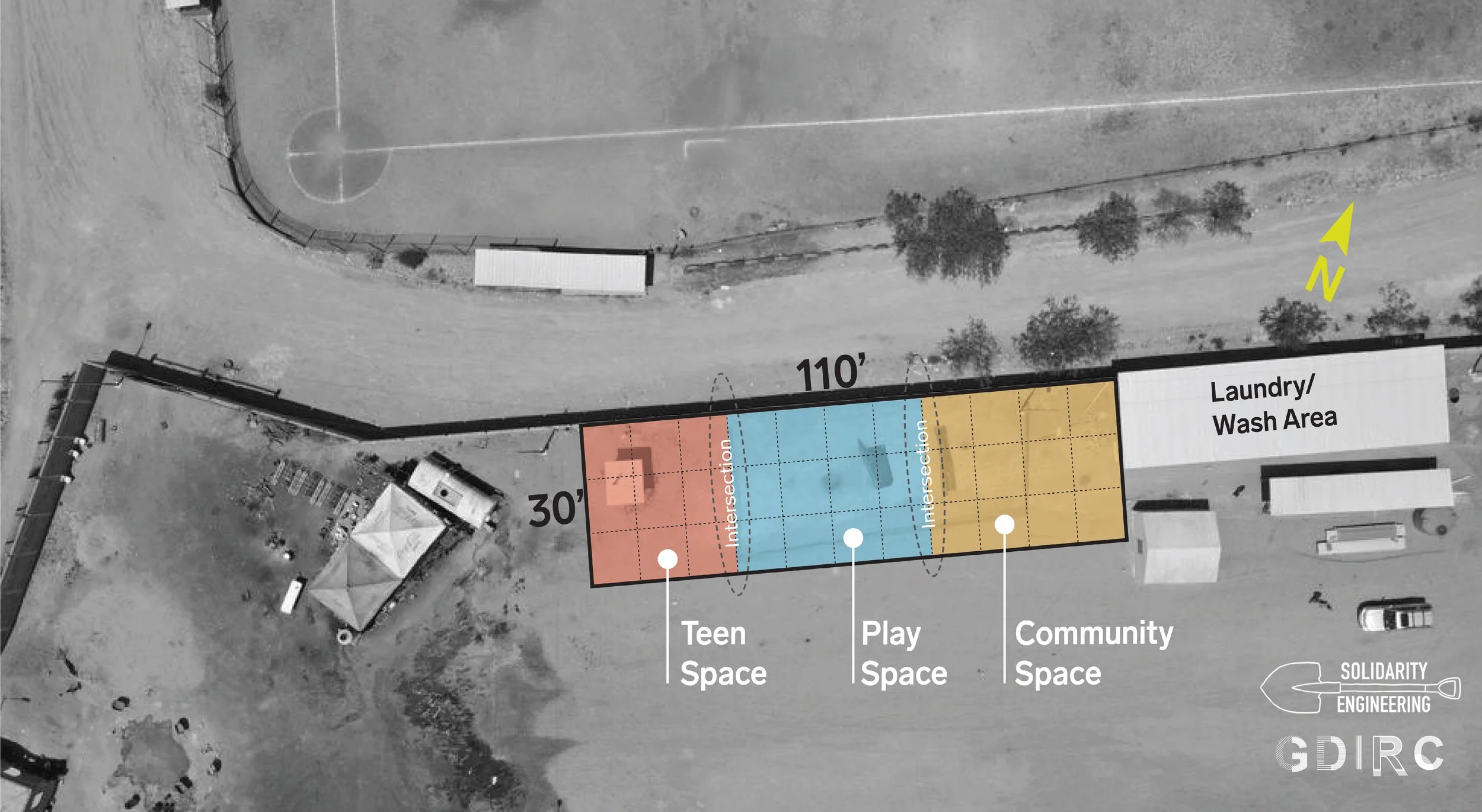Con Cualquier Cosa
(with anything)
an inclusive place for residents of all ages, fostering unity and belonging.
GDIRC has partnered with Solidarity Engineering (SE), a humanitarian engineering organization with a presence at the US-Mexico border. Together, we embarked on a collaborative initiative to design and construct a community space within Senda de Vida 2.
The goals of the project were to create a vibrant and inclusive environment that would cater to a variety of age groups and serve as a hub where residents could come together and thrive.
Timeline: 2022- (In Construction)
Location: Reynosa, Mexico
Partner: Solidarity Engineering
Size: 315 m² / 3,390 sf
Cost: $57,000 (Fundraising) + $7,500 (Rise Up and Read donation toward the library)
Key Team Members: Mitch Ryerson, Tina Binazir, Andrea Carolina Batarse, Carley Elliot, Parmis Mokhtari-Dizaji
Site
The border city of Reynosa hosts asylum seekers from around the world. The dense living conditions in Reynosa shelters leave no safe spaces for women and children.
In response to this humanitarian crisis, "Senda de Vida 2" emerged in 2022, with a demand for safety and sanctuary far surpassing expectations.
Today, between 1,500-3,000 migrants, including women and children, live in Senda de Vida 2, waiting to hear about their asylum status. In a location characterized by extreme heat, heavy downpours and scorching sun, asylum seekers reside in tents pitched on concrete slabs and gravel, poorly ventilated dormitory structures or under large, open-air, shared living spaces.
The Con Cualquier Cosa Community Space Project commenced in 2022 and is projected to be fully completed by 2024. To account for the intense summer conditions, the project was split into three construction phases. The initial phase prioritized the construction of the shaded structure. Phase two featured the construction of the playground, a library for all children, a solar-powered charging station for electronic devices, and the addition of fans. Finally, phase three will focus on constructing the teen space.



Design Process
Over several months, the Tex/Mex Border Community Space Project has evolved through a series of virtual meetings involving both the design and field teams, resulting in a comprehensive design brief that envisioned a space blending fixed and loose elements to provide diverse play and rest opportunities for individuals of all ages. This design approach was shaped by community input obtained during engaging workshops with children of varying ages.
The overall design consists of three key areas:
> Teen Space:
A designated area designed with input from the teenagers to cater to their unique needs and interests. A dedicated library has been planned for Teen Space. This library has been made possible through a generous donation from "Rise Up and Read," a charitable organization committed to promoting literacy and education among young people.
> Children's Playground:
A playground area designed with safety and creativity in mind, where children can play and explore in a place that acknowledges their particular needs.
> Community Gathering Space:
An open area for residents of all ages to gather, connect, and host community events.
Virtual meetings between the GDI Team, SE Team and Rise Up and Read team persisted throughout the construction phases. Additionally, GDI members made several trips to Reynosa, Mexico, actively assisting in the construction efforts, particularly in the assembly of playground components.
During the construction process, we encountered multiple challenges linked to the intricate circumstances at the US-Mexico border and the inherent difficulties of operating within a temporary environment, necessitating us to adapt and modify the design.
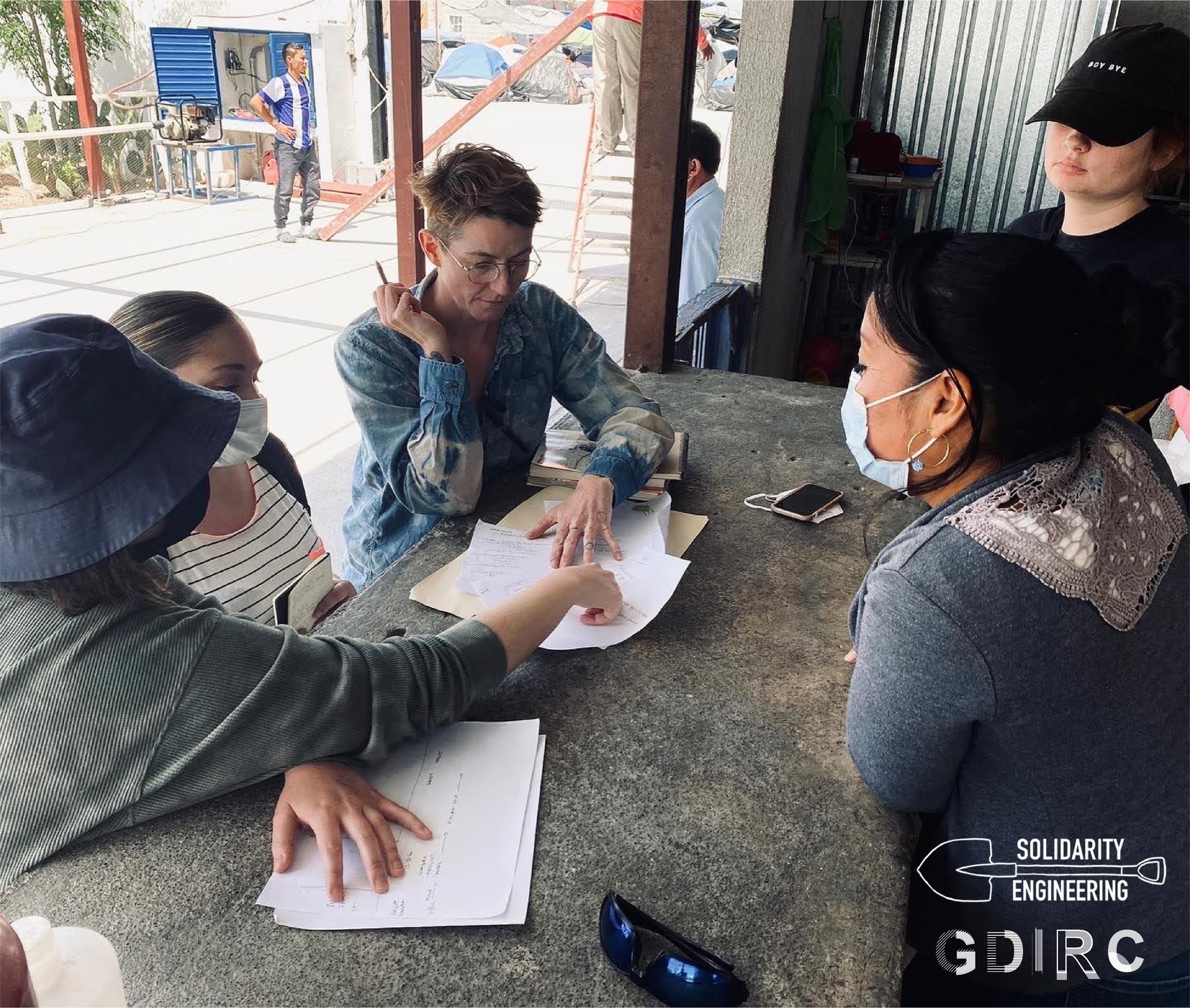
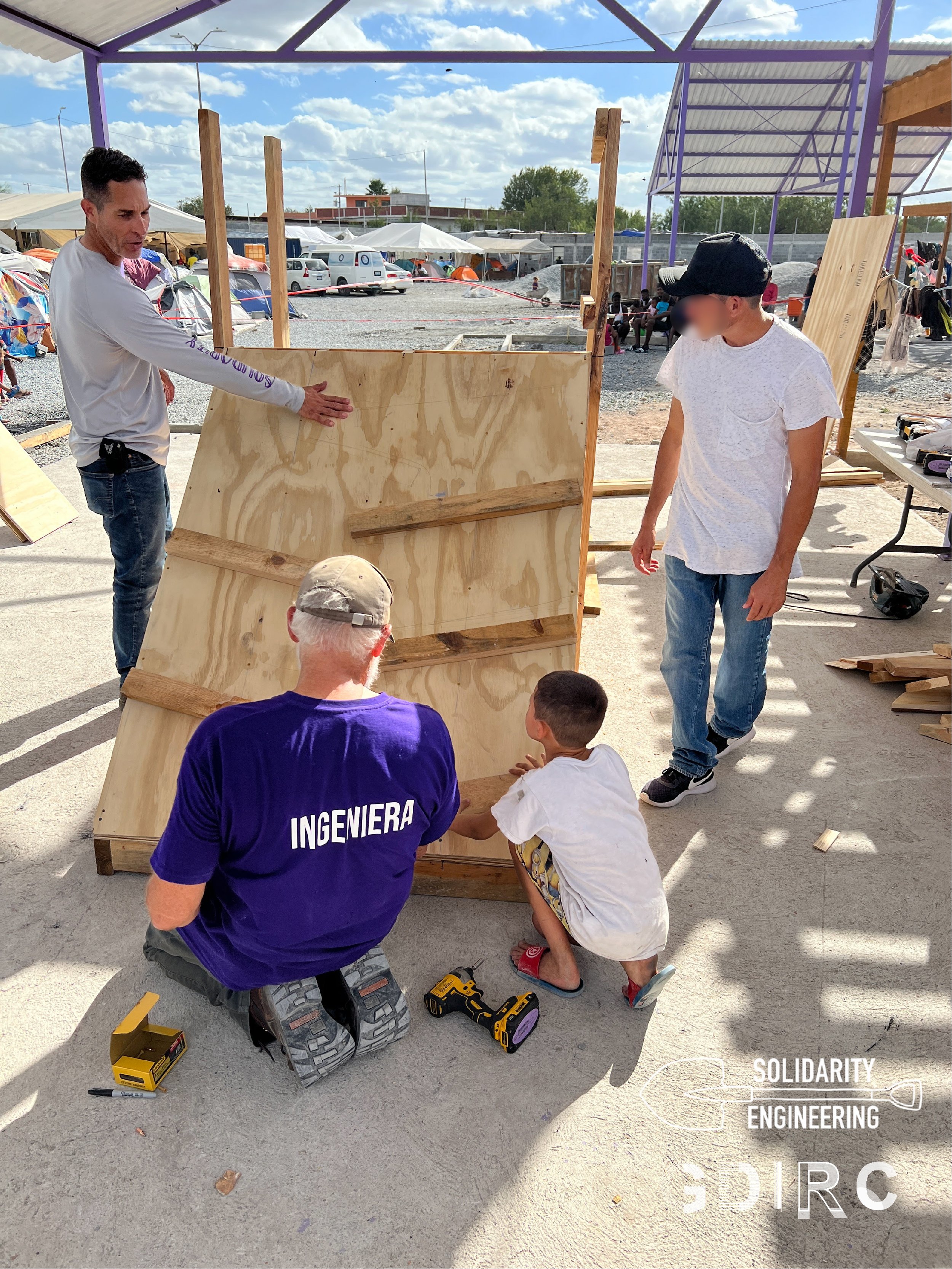

Community Engagement
The design process for this community space is marked by a commitment to inclusivity and community participation. The project's design team, in collaboration with Solidarity Engineering, actively engaged with the community, placing a special emphasis on involving children in the decision making.
In the initial stages of the design process, the design team created a catalog with 20 different possible play activities intended for use as a survey. The Solidarity Engineering team subsequently organized two workshops at Senda 2, allowing the children to participate in selecting the most suitable toys and play equipment for their upcoming playground.
Throughout the construction phase, Solidarity Engineering successfully engaged the local community in the construction of certain elements, working in tandem with local contractors. Many community members, including young children, eagerly participated in the assembly of play elements, showcasing their excitement and willingness to contribute.


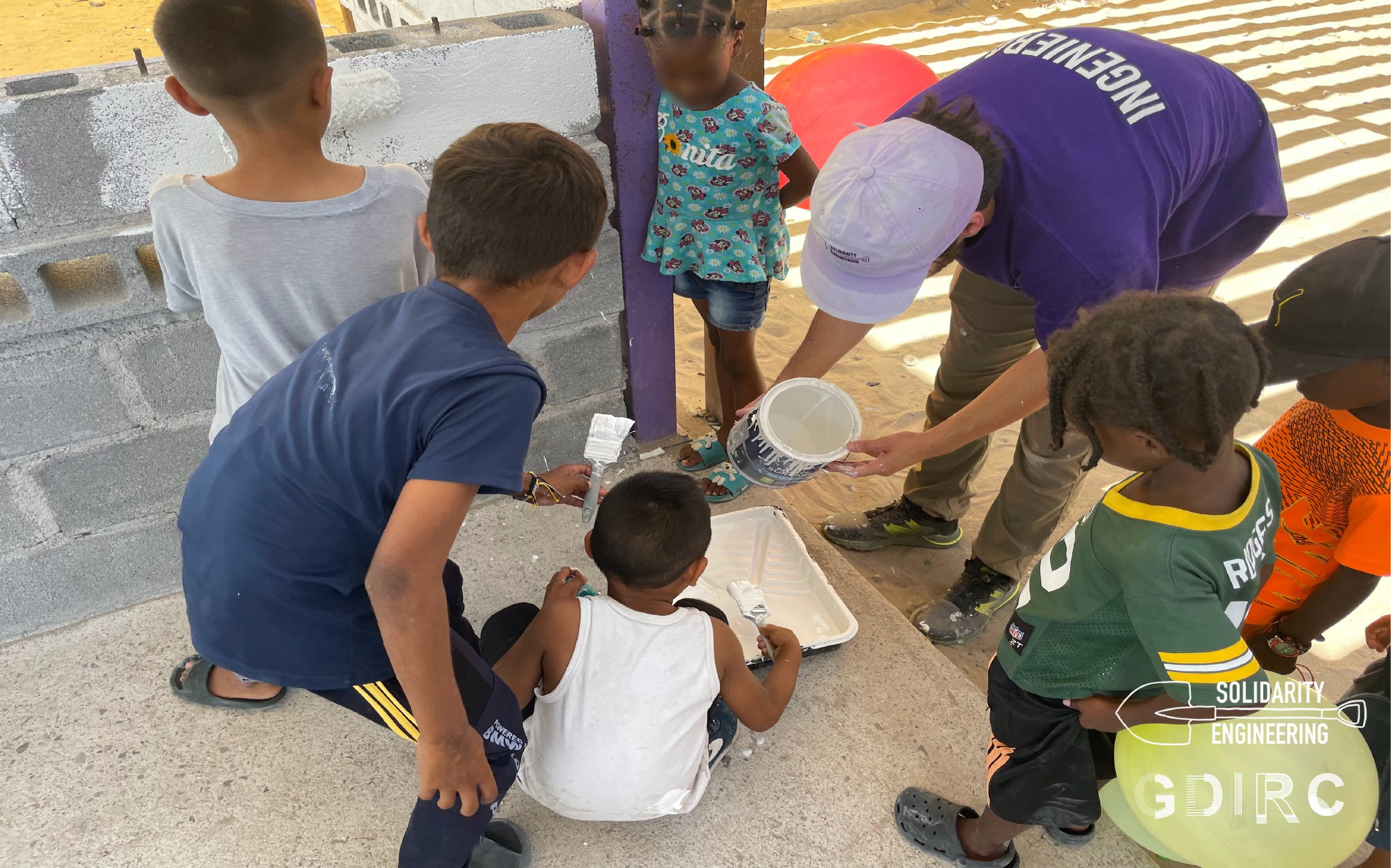

Constructions
Skilled refugees residing in the camp, the SE team and local contractors from the host community have been an integral part of the construction team. Their expertise and dedication contribute significantly to the successful execution of this community space project.
The SE team appointed a skilled construction manager who oversaw the project. They worked closely with various local subcontractors, each contributing their expertise to different aspects of the project. Additionally, some smaller tasks were carried out by asylum seekers when possible.


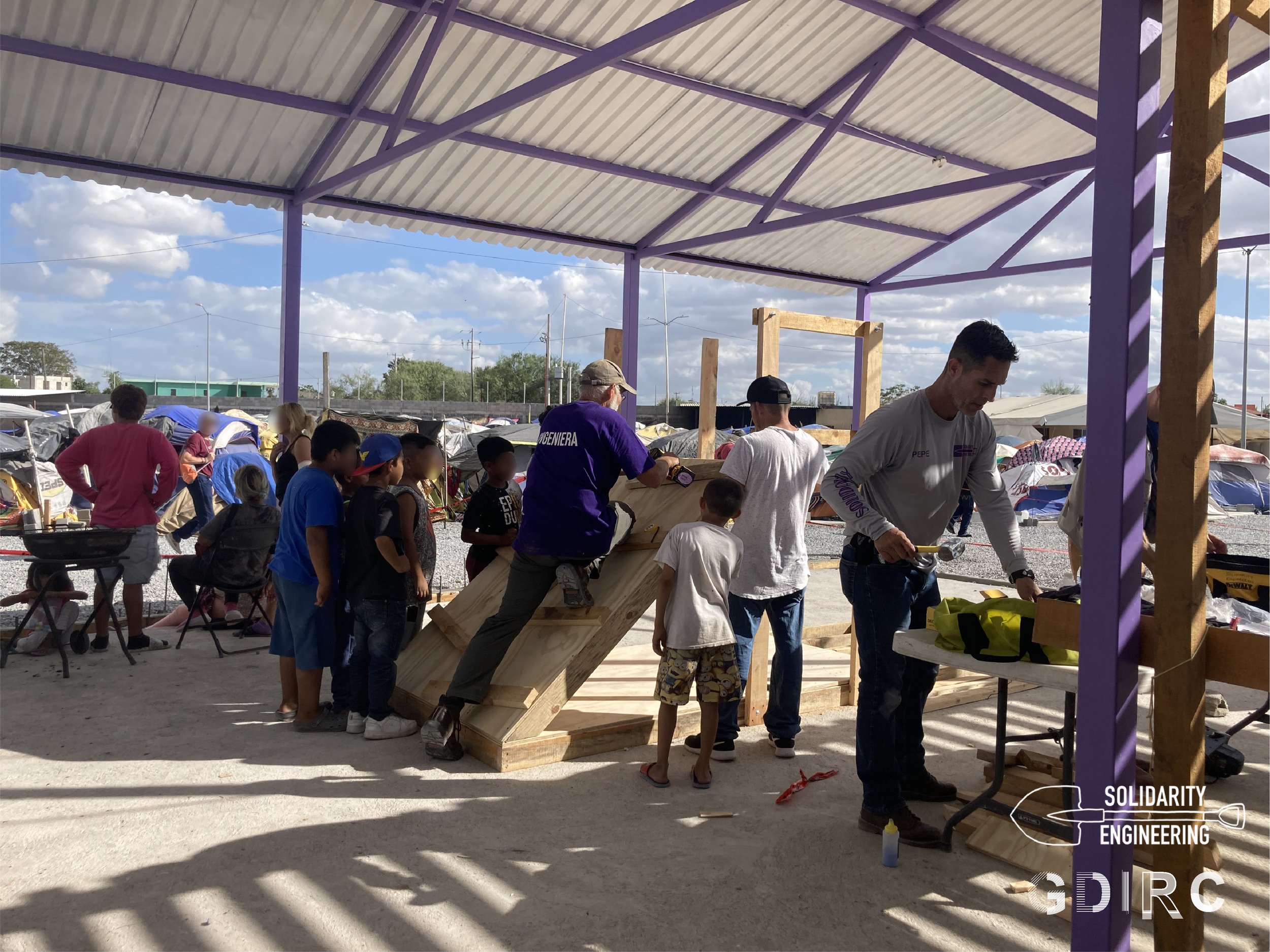
Conversely, the design team started a partnership with an organization called Sails to Shelter, committed to creating a global circular economy for retired Grand Prix and elite racing sails. Our goal was to repurpose these robust materials as shade materials. To put this concept to the test, a one-to-one mockup of the site was created in Massachusetts. However, the team encountered several structural challenges, especially considering the high winds and thunderstorms in Reynosa, Mexico. Nevertheless, our commitment to exploring the vast potential of sails in humanitarian contexts remains, and we are eager to develop more concepts in the future.
See a time lapse video for the mockup construction:





